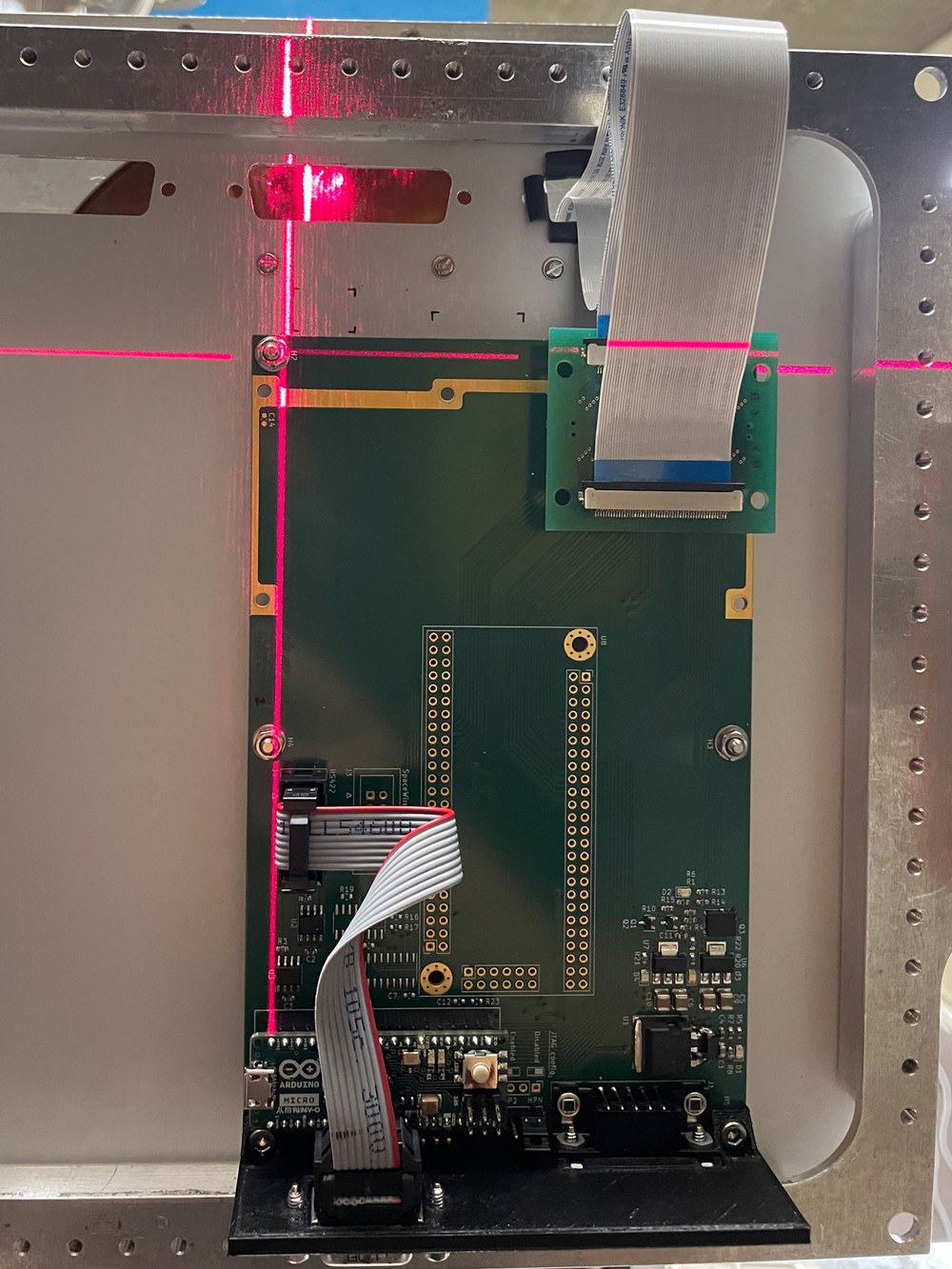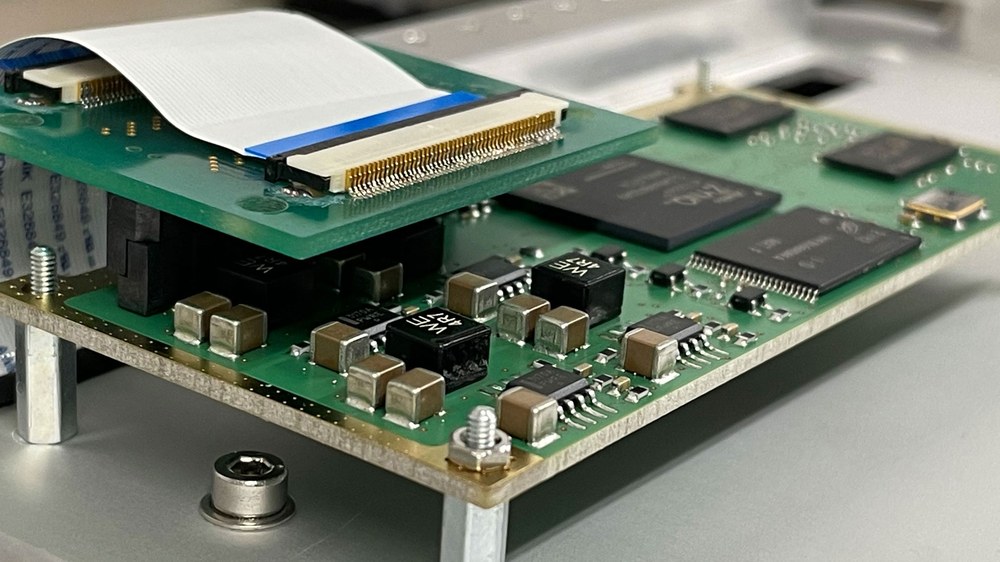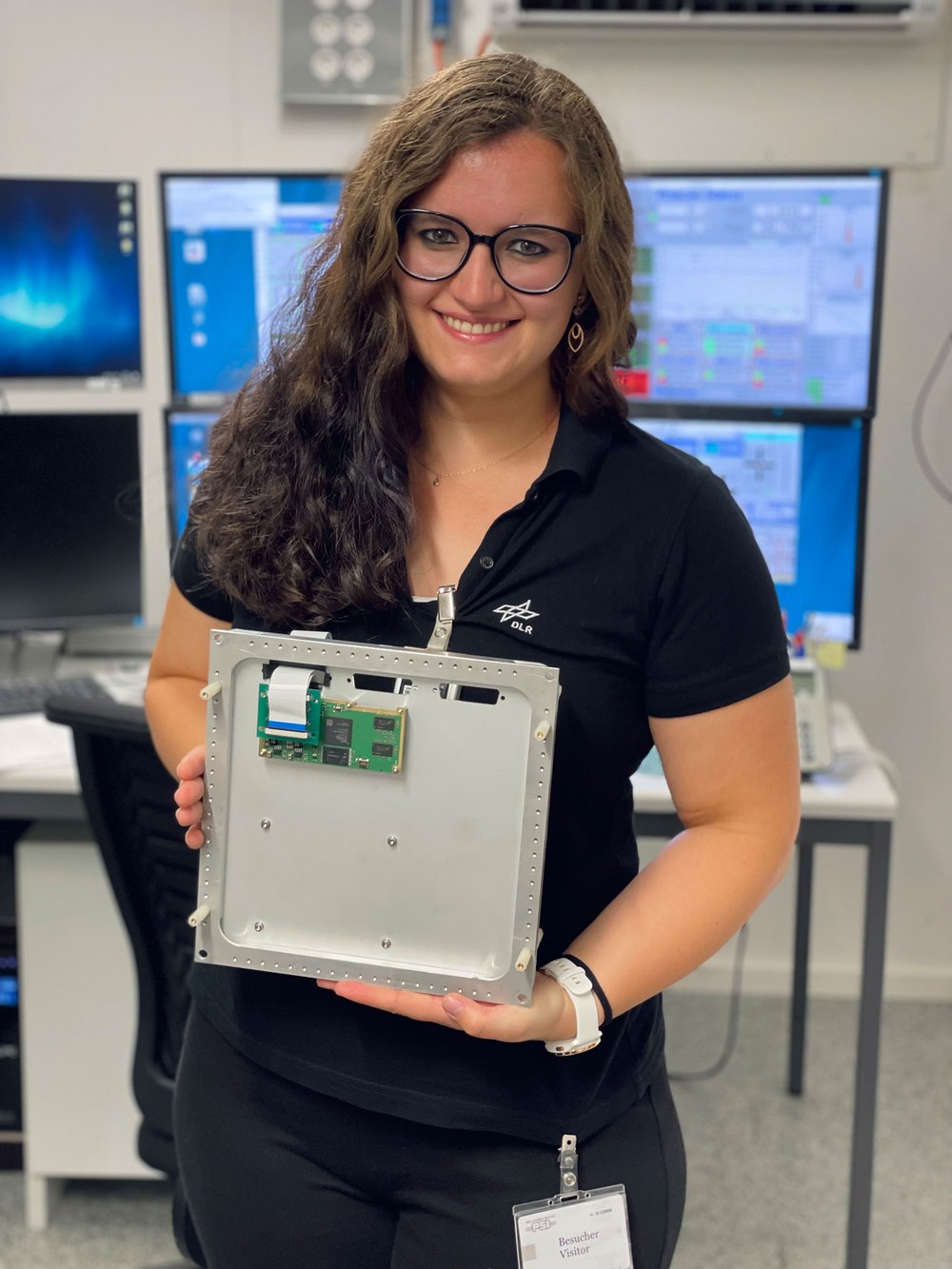On Earth instead of in space – satellite software tested using a particle accelerator

I never thought I would get this close to a particle accelerator – and yet here I am at the Paul Scherrer Institute in Switzerland, standing next to such an impressive facility. As a developer of onboard software for spacecraft, I'm normally happy when the correct lights flash. There are lights here too, but it is still very different. We're working in a nearly deserted huge research facility in the middle of the night. But that doesn't mean it is quiet – due to the many technical systems that run around the clock, there is always a backdrop of flashing status lights, noisy ventilation systems and the occasional beeping device. During the day, the proton beam generated by the accelerator facility is reserved for cancer patients undergoing proton therapy. And for four nights, it is now generating space conditions for the DLR Scalable On-board computing for Space Avionics (ScOSA) project.
The project is investigating the effects of space radiation on electronic components and the software running on them. I'm developing an application that finds radiation-induced errors. Next year, a satellite is due to be launched on which ScOSA and my application will be installed. The opportunity to use the proton accelerator facility in Switzerland for a week was very useful. A radiation test on the ground can not only ensure that the application behaves as expected, but also provide important comparative data. Although simulations can be used to determine, to an extent, which radiation a satellite will encounter in which orbit and with which level of solar activity, what this actually means for the number of errors depends on many other factors and is difficult to predict.

Not just a prototype, but a configuration suitable for an orbital flight
With these thoughts in mind, I prepared an application for the RADiation facility Network for the EXploration of effects for indusTry and research (RADNEXT) programme with the support of my colleagues at the DLR Institute for Software Technology. RADNEXT enables radiation tests for research purposes. The good news came just a few weeks later; our application had been accepted and I would be travelling to Switzerland with two colleagues! Immediately, not only I but the whole team became very busy with preparations. As one of our goals was to compare it with a flight in orbit, we had to get as close as possible to the flight mission with our test set-up. For me, this meant above all getting my application to a level of development where it works reliably and no longer requires any major changes. For my colleagues at the Institute of Space Systems, this meant that we not only needed a prototype of their hardware, but a version that was very close to the final design.
Once these preparations had been completed – with plenty of enthusiasm and coffee – we were faced with the next challenge. Since Switzerland is not an EU country, we had to deal with bureaucratic hurdles such as customs documents and the transport of the hardware. After some debate, we finally decided to send the hardware with all the electronics by courier – even though the hardware team clearly found it difficult to hand everything over after all their work.

Unpack, set up, begin!
Once we had all – this of course includes the crate with our experimental equipment – arrived safely at the Paul Scherrer Institute, we did not have much time to be impressed by the huge research facility. We set up our hardware in the irradiation chamber, the employee responsible for us calibrated the proton beam and carried out an initial measurement together with us. Then we were ready to go. While I kept an eye on the many screens in the control room, one of my colleagues was busy monitoring and saving our measurement results. Once that had settled down, I was actually allowed to select and set the radiation parameters myself. The radiation chamber is shielded for safety reasons. In the control room, we can see how the displays on the screen change. And, of course, that our experiment is starting to find errors.
Now, we 'only' have to analyse all the data that we have collected over the course of the week. Then we will not only have the desired comparative values but will also have gained direct experience. The measurements – whether from orbit or from the particle accelerator – can be used to make onboard software even more resistant to radiation-induced errors in the future.


This RADNEXT project was funded by the European Union's Horizon 2020 programme.
The Paul Scherrer Institute (PSI) is the largest research institute for natural and engineering sciences in Switzerland. Its research work focuses on future technologies, energy and climate, health innovation, and the fundamentals of nature. The PSI proton accelerator has been available for testing space components for several years.
Tags:
